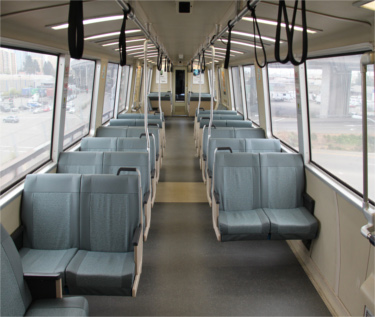When our agencies (MTC, SFCTA, and PSRC) were in the early stages of discussing a potential collaboration between us, there were three primary themes that we were all in agreement on:
- using this money for its intended purpose: implementing a planning-ready dynamic network model within a public agency, that is useful and capable of answering important and relevant questions;
- making the implementation sustainable from a staffing and operations point of view, so that the investment isn’t lost a few years later; and
- sharing the knowledge of what we learn about the viability and issues surrounding implementation of dynamic network models with agencies which weren’t lucky enough to win this grant (or weren’t ready to apply) and with academics and funders.
This post discusses our third pillar: communications.
Target Groups
We want to reach out to, learn from, and also disseminate information to three groups: academics, technical practitioners, and planners/managers. I should emphasize that we seek to both gain information from these sources as well as disseminate it to them.
Academic:
- share advances that we have made
- highlight future research topics (things that work in theory but still have gaps in practice)
- learn about best practices and past work
- get help with technical or theoretical problems we encounter
- contribute towards getting dynamic network models taught in school
Technical practitioner:
- share tips and tricks amongst ourselves
- share the “real life” experience of moving theory into practice
- share lessons learned
- share details about our technical approach
- share details about the “behind the scenes” approach to getting things done
- make our work, discussions, and issues as transparent as possible to serve as an example of “what you can do” and sometimes “what you shouldn’t do” too ;-)
Planner or manager:
- share what these types of tools are capable of doing
- learn about the types of questions that are relevant to planners and decision-makers
- be transparent about the cost and risk of creating and maintaining these types of tools versus other analysis methods
Tactics
Full Transparency
In this vein, we have made almost everything we can open and free to view in a timely manner. Pretty much everything we’re doing is conveniently linked to our project website, including:
- code (i.e. for the Python version of Fast-Trips)
- interim and final project deliverables (e.g. the lit-review for transit route choice)
- data standards (e.g. the extended GTFS format for Fast-Trips)
- workplan
- performance measures
- progress reports to FHWA
- data (when we get there)
- results (when we get there)
- our thoughts, struggles, and progress via the blog
And if there is anything else people think would be useful to make publicly available - let us know!
Academic Involvement
We have partnered with the University of Texas at Austin Network Modeling Center to collaborate and provide advice… and to develop teaching materials that will be publicly available with the hope that it can be more widely taught in school. We are also lucky enough to have Dr. Mark Hickman of the University of Queensland on our team as an academic advisor.
We are fully committed to submitting academic papers for consideration at various conferences and journals and have set aside budget for this purpose.
We have tried to minimize the amount that we bother academics with our questions by consuming a great deal of literature in our literature reviews and selected a handful of academics with which to follow up in order to make sure we understand their research and updated thoughts (since publication of their papers).
Technical Peers and Friends
Aside from quarterly meetings among all groups of C10 implementation agencies where we each provide updates about what we have been doing, we have set aside budget to have visiting peer agencies come and learn about what we did. It would be great if they didn’t have to repeat any mistakes we’ve made, and can take all the shortcuts that we wished we had.
Central Portal
We committed to creating a central, front-facing website as opposed to just having “code” on GitHub. The website is the go-to central portal for everything going on on this project and is updated no infrequently than once per month (although in practice much more often). The website (via the blog comments) is also a way to engage a two-way conversation.
One-Pager, Presentation, and blog post on “why”
For the planners, decision-makers, and public - we wanted a single page that we could hand them that would explain what we are up to and why - hence our plan to develop a one-page fact sheet. For a more narrative version, we have a blog post and for a more in depth conversation, we have a basic slide deck that we have given to planners.
Hire a planner!
Another big decision we made early on was to hire a planner as the project manager instead of a modeler. Diana is involved in a multitude of planning projects across many public agencies and is thus capable of identifying “what is important” from a planning perspective to keep us on track to providing something useful as opposed to perfecting an irrelevant tiny piece of the giant puzzle. The perspective she provides is really valuable.
So there you have it. Let me know if you have any questions or comments about how we’re doing!
